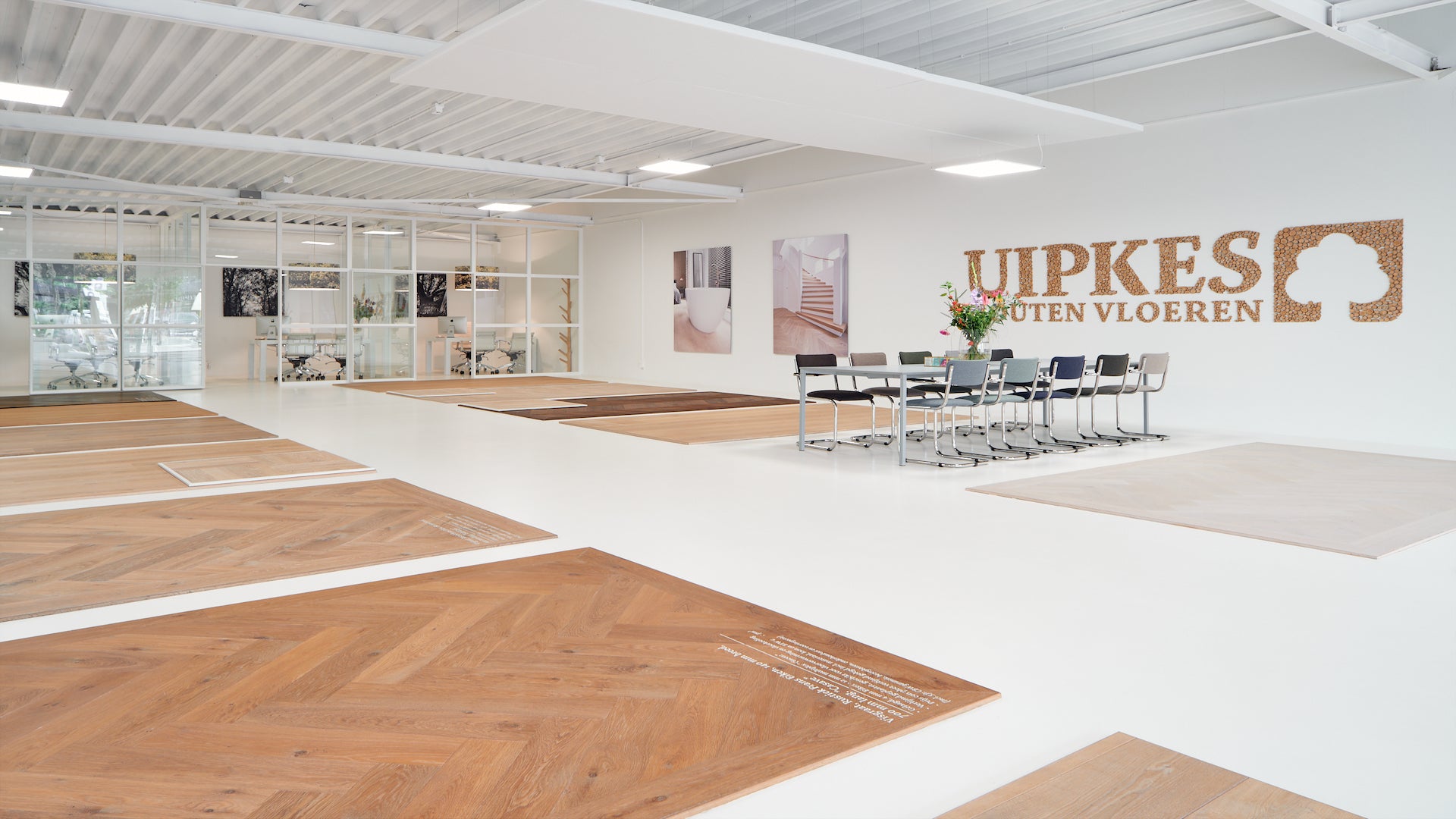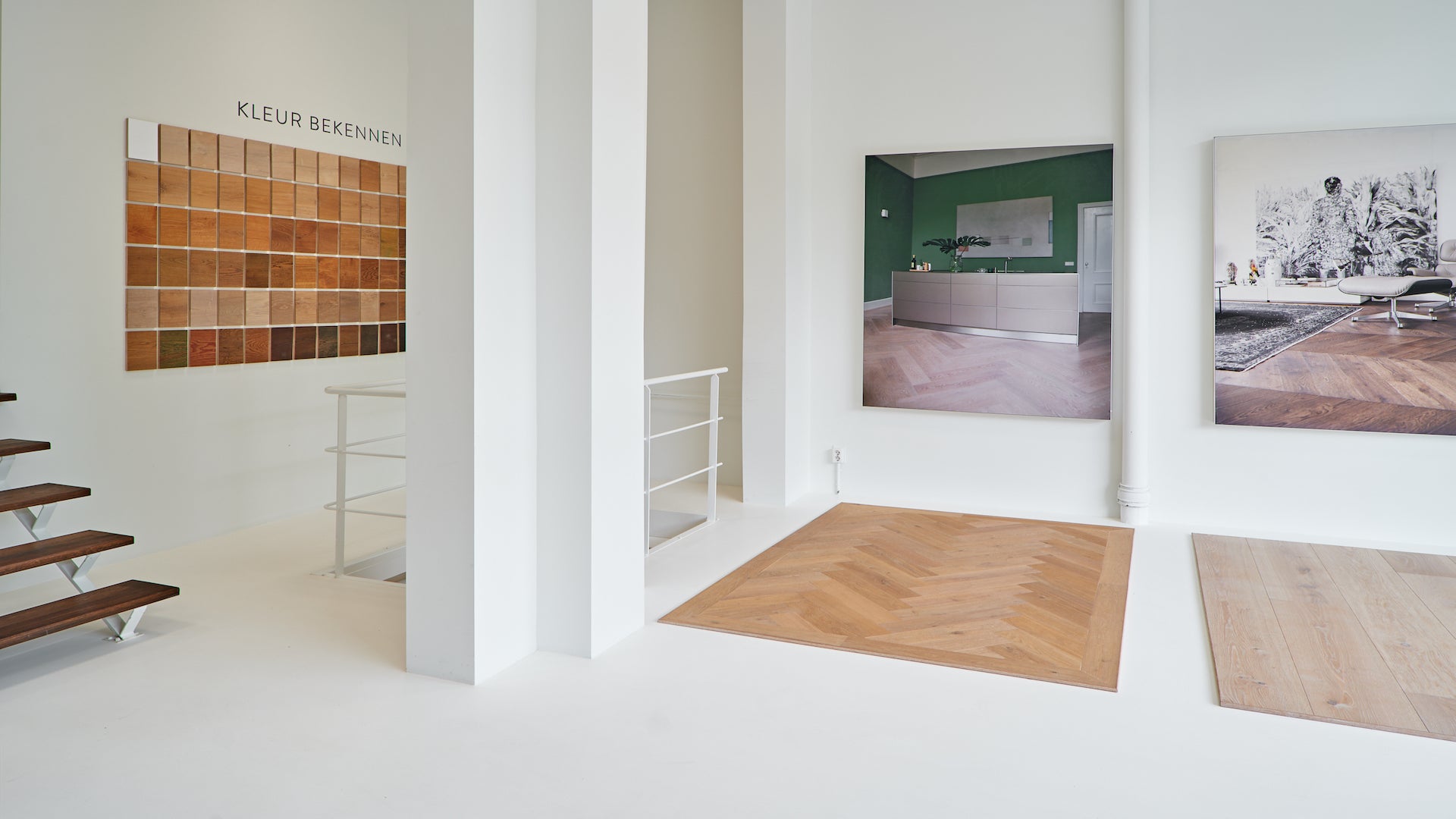Vloerverwarming Aanleggen
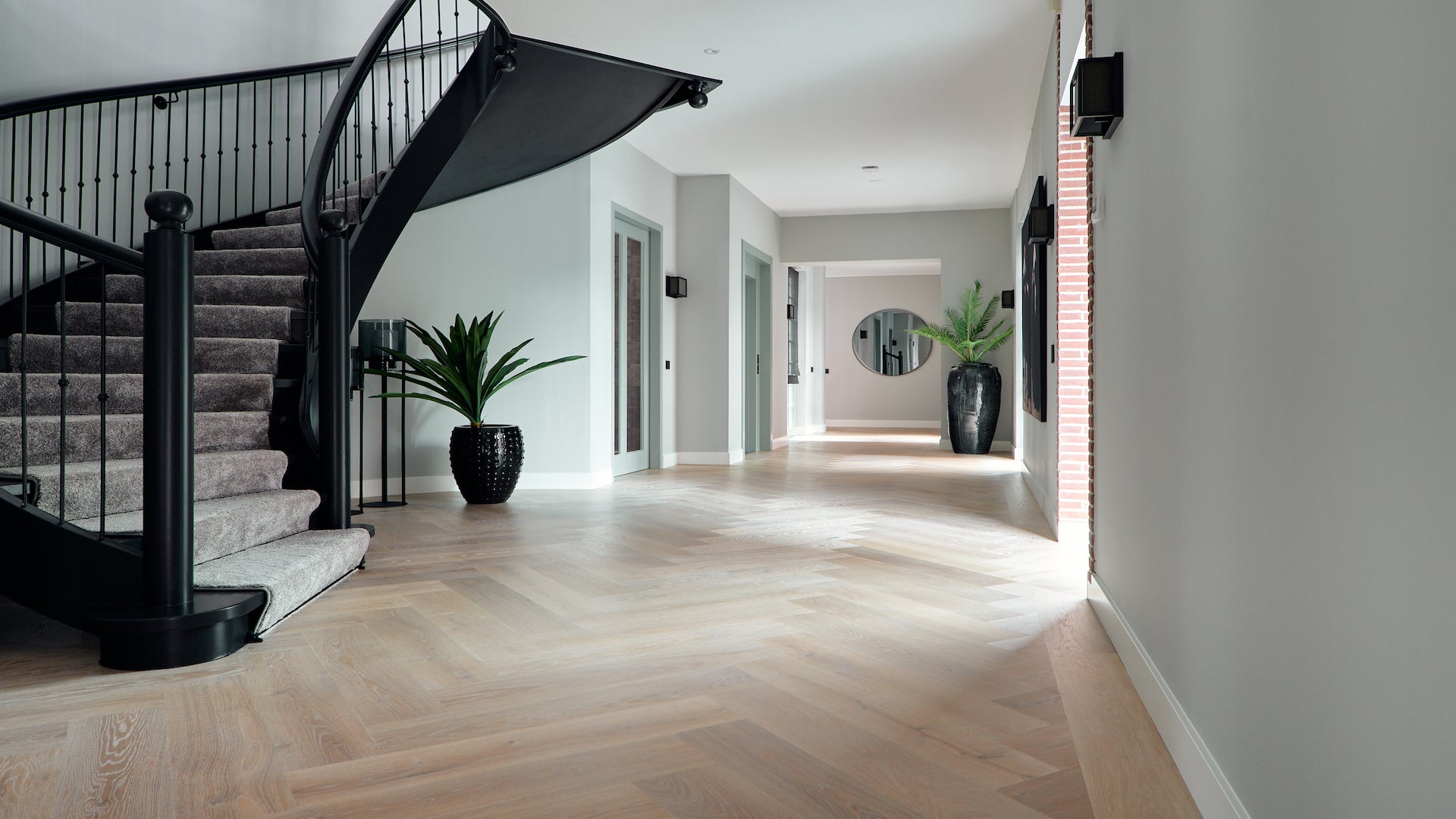
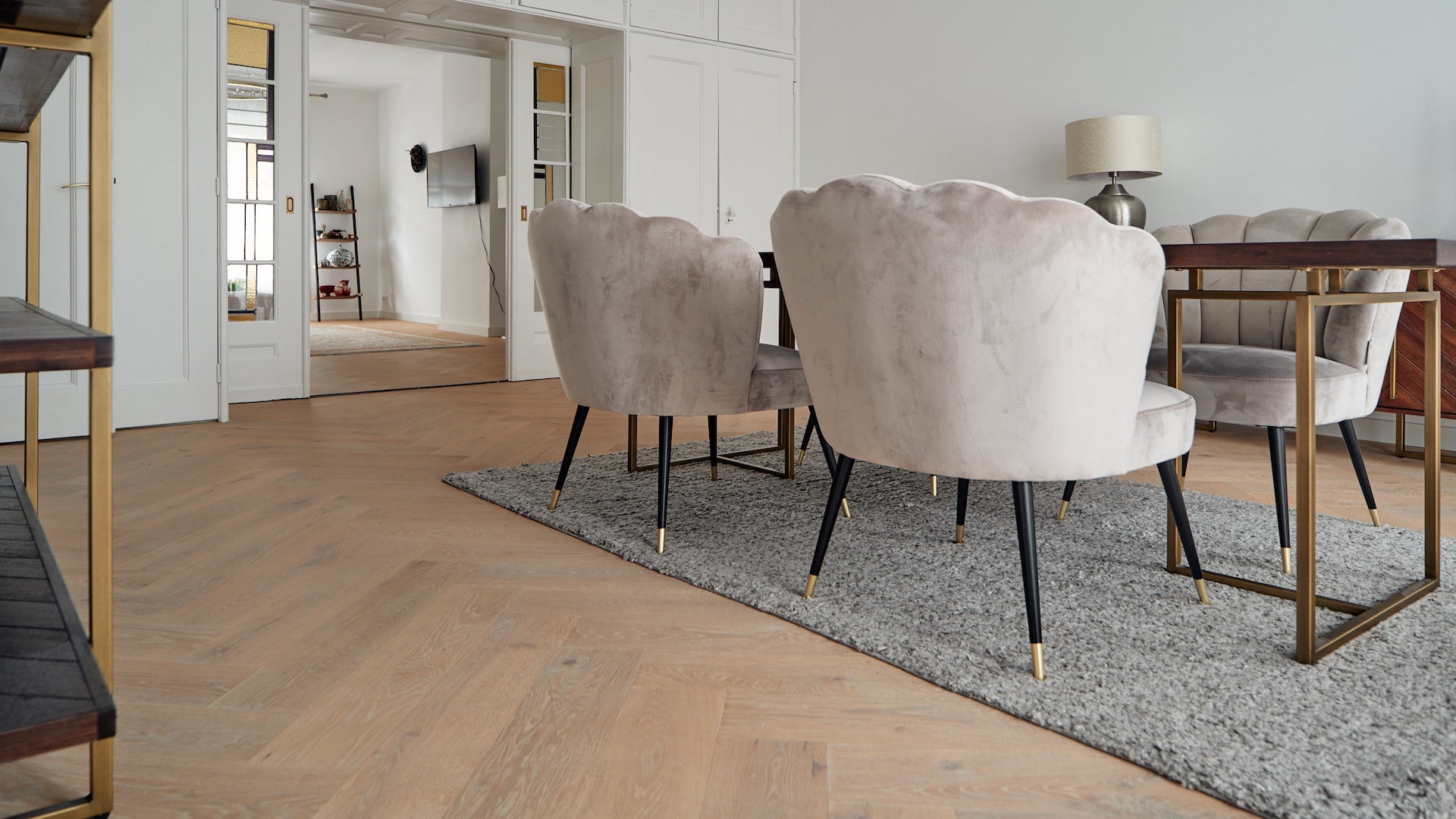
Choose efficient heating with underfloor heating
Discover the comfort of underfloor heating ! Do you want to heat your home with an efficient and pleasant solution? Come to our showroom and be inspired by the possibilities of underfloor heating . Our experts are ready to inform and advise you about installation options. Experience the ultimate comfort under your feet. Visit us today!
Mooring by Uipkes
In addition to installing wooden floors, we can also install underfloor heating. We can take care of the entire project. The advantages of this are:
- You will receive a combination discount if you purchase both underfloor heating and a wooden floor from Uipkes.
- There is one point of contact for all work, such as removing old floors, installing underfloor heating and the wooden floor.
- Plans for activities can be better coordinated, compared to the situation where you engage multiple parties for the various activities.
- All materials are well matched
- The installation is done by our own experienced floor installers.
You can also purchase the underfloor heating installation service from Uipkes without purchasing a wooden floor.
We take care of the installation of a new screed floor (including screed floor), milling in various floors and can connect the system to the heat source.
Why Choose Underfloor heating ?
-
Health
underfloor heating reduces dust accumulation in the room. In addition, it prevents mold formation due to low humidity.
-
Comfort
The heating pipes are located throughout the room so that the heat is evenly distributed.
-
COST SAVING
Underfloor heating uses less energy, which can save up to 15% on your energy bill.
-
Spatial Feeling
Without radiators, the room looks a lot more spacious.
The Origin of Underfloor heating
Underfloor heating is not a new technology; it has its roots in the ancient Roman bathhouses. The Romans used hypocaust systems, in which warm air was passed under the floors to heat rooms. However, modern underfloor heating systems, which use water or electricity, are a development of the 20th and 21st centuries.
Operation Underfloor heating
There are two primary types of underfloor heating: water-based (wet) systems and electrical systems.
Water-based systems: Hot water circulates through pipes installed in the floor. The heat is transferred to the floor, which then distributes the heat evenly over the surface.
Electrical systems: These use heating elements or mats that convert electricity into heat. They are placed directly under the floor finish. Often suitable for smaller spaces
Water-based (Wet) Underfloor heating
How it works: This system uses hot water that circulates through pipes under the floor. A heat source (such as a boiler or heat pump) heats the water, which is then pumped through the pipes. The heat is evenly distributed over the floor and radiates upward into the room.
Advantages:
- Energy Efficiency: Can use less energy than electrical systems, especially if powered by an energy efficient heat source.
- Consistency: Delivers even heat over the entire surface.
- Flexibility: Can be combined with different heat sources, such as solar boilers or heat pumps.
Cons: - Installation: Can be more labor intensive and expensive to install than electrical systems.
- Height: Can affect the floor height due to the pipes and insulation layers.
Vloerverwarming Aanleggen
-
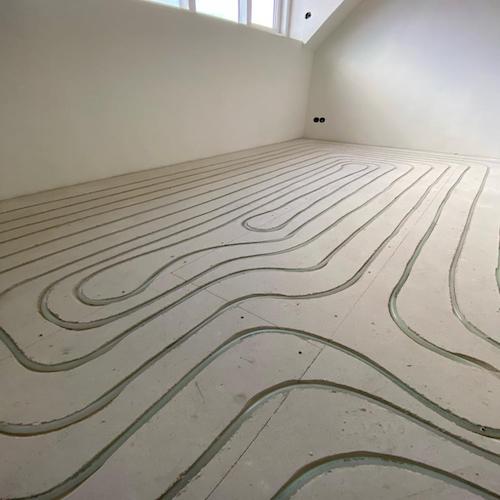
Underfloor heating installation - 1 group
Regular price € 1.486,00 EURRegular priceUnit price / per -
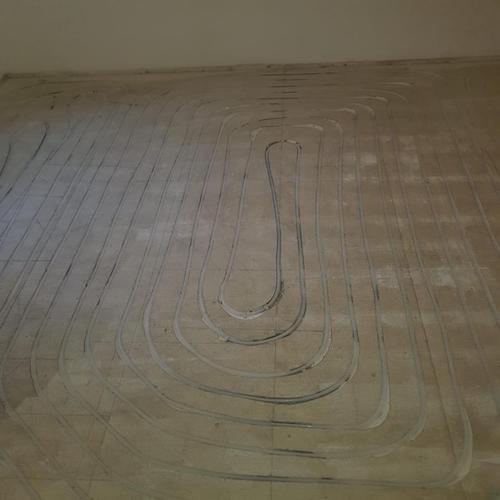
Underfloor heating installation - 2 groups
Regular price € 1.786,00 EURRegular priceUnit price / per -
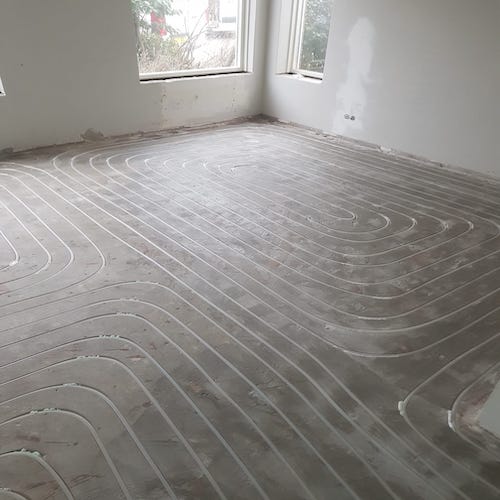
Underfloor heating installation - 3 groups
Regular price € 2.365,00 EURRegular priceUnit price / per -
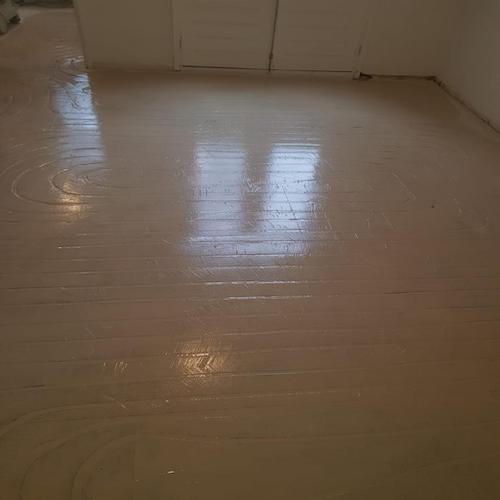
Underfloor heating installation - 4 groups
Regular price € 2.867,00 EURRegular priceUnit price / per
Magazine vol inspiratie
Electric Underfloor heating
How it works: This system uses electric heating mats or cables that are installed directly under the carpet. When current passes through them, these elements produce heat that radiates through the floor.
Advantages:
- Easy installation: Often easier and faster to install than water-based systems.
- Thin profiles: The heating mats or cables are often thin, which has minimal influence on the floor height.
- Direct control: Can respond more quickly to thermostat changes than water-based systems.
Cons: - Cost: While installation may be less expensive, ongoing electricity costs may be higher depending on electricity prices.
- Durability: In some situations, electrical systems may have a shorter lifespan than their waterborne counterparts.
- Small spaces: Electric underfloor heating is often intended for smaller spaces, such as a bathroom.
Hybrid Underfloor heating
Some systems combine electrical and water-based elements. For example, a water-based system for most of the house, with electric heating in areas such as bathrooms, where quick heating is desired.
Low Temperature Underfloor heating
Specifically designed to operate at lower water temperatures than traditional systems, making them ideal for combination with heat pumps that operate at their best at lower temperatures.

Types of Underfloor heating
Read more about combining wooden floors with different types of heating systems. In addition, it is often possible to install a wooden floor over an existing floor with heating systems.
Underfloor heating costs per 50 m2
-
Installation in a new screed
- Pouring sand-cement screed floor with finish (€30 / m2) - €1500
- Drying time accelerator (optional; € 10,- / m2) -
€500 - Install Underfloor heating on grid; distribution station; connecting pipes - €2500
-
Milling in gypsum fiber boards
- Removal and disposal of existing screed floor (depending on type) - € 750
- Installing Fermacell / Estrich / Plasterboard subfloor and edging - € 3000
- Milling underfloor underfloor heating , installing pipes, distribution station and pipes - €3150
-
Milling Into Sand Cement
- Removal and disposal of existing screed floor (depending on type) - € 750
- If necassary we can level the screed -
€ 1050,- - Milling in underfloor heating, installation of pipes and distribution station -
€ 3150,-
-
Milling Into Anhydrite Floor
- Removal and disposal of existing screed floor (depending on type) - € 750
- If necassary we can level the screed -
€ 1050,- - Milling underfloor underfloor heating , installing pipes and distribution station - € 3150
-
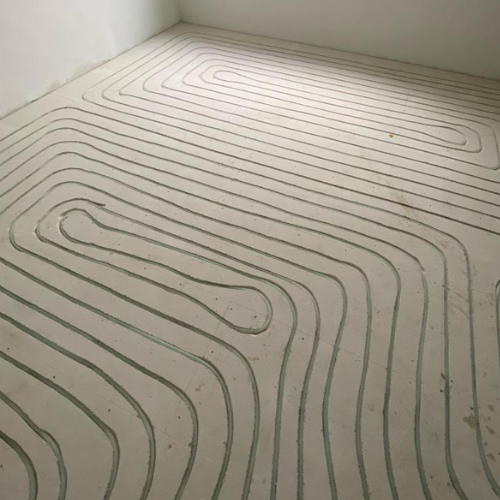
Milling underfloor heating 1 group up to 9 m2
Regular price € 1.486,00 EURRegular priceUnit price / per -
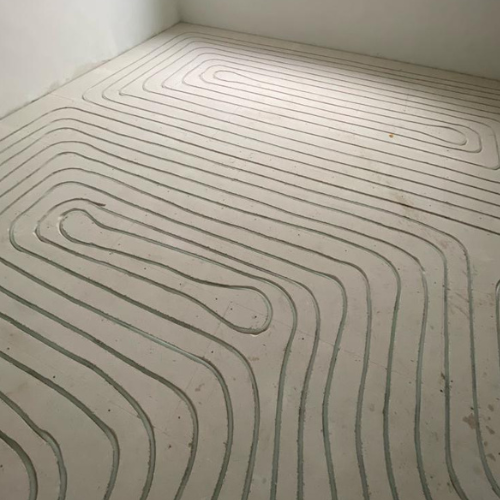
Milling underfloor heating 2 groups up to 18 m2
Regular price € 1.786,00 EURRegular priceUnit price / per -
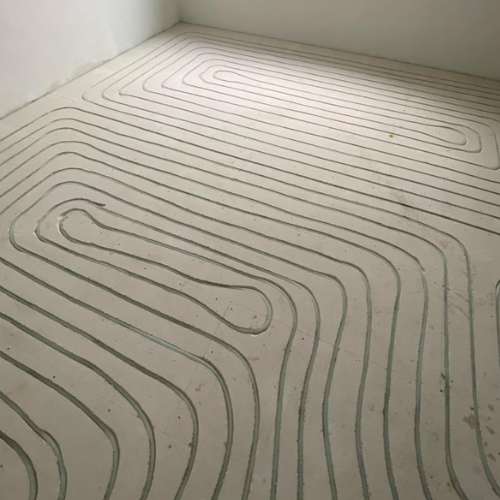
Milling underfloor heating 3 groups up to 27 m2
Regular price € 2.365,00 EURRegular priceUnit price / per -
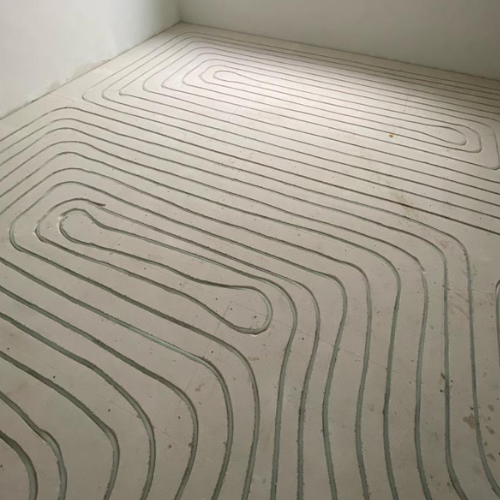
Milling underfloor heating 4 groups up to 36 m2
Regular price € 2.867,00 EURRegular priceUnit price / per
Suitable Heat Sources
Underfloor heating systems can use various heat sources, including heat pumps, central heating boilers, solar boilers, electric underfloor heating and biomass boilers. The choice depends on factors such as energy efficiency, costs and sustainability. Heat pumps are an environmentally friendly and efficient option, while electric underfloor heating can be suitable for smaller spaces.
View all heat sources
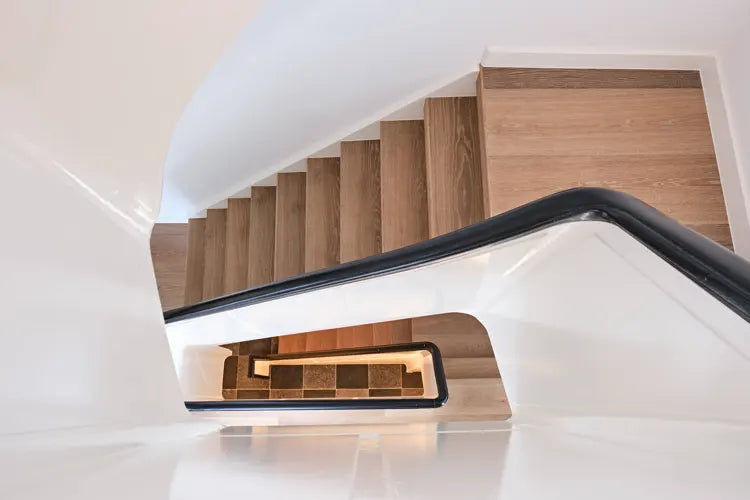
Frequently Asked Questions
What are the advantages of underfloor heating ?
Some of the advantages of underfloor heating are even heat distribution in the room, comfortable floor temperatures, no radiators taking up space, energy efficiency, reduced air circulation and the possibility of combining the underfloor heating with other heating systems.
How does underfloor heating work?
Underfloor heating works by allowing hot water to flow through heating pipes or heating mats installed in the floor. This heats the floor, which in turn gives off heat to the room. The water is heated by a heat source, such as a central heating boiler or a heat pump.
Is underfloor heating energy efficient?
In general, underfloor heating can be energy efficient, especially in well-insulated rooms. Because underfloor heating operates at lower temperatures than traditional radiators, it can be more efficient and have lower energy costs.
Can you install underfloor heating in every room?
In principle, underfloor heating can be installed in most rooms, but there are some factors to consider, such as the space available for the installation of the heating pipes or mats, the floor covering and the insulation of the room.
Can I combine underfloor heating with radiators?
Yes, underfloor heating can be combined with radiators. This is often done in rooms where additional heating is required. Good control and balance between underfloor heating and radiators is important to achieve the desired heat distribution.
Can you install underfloor heating on a wooden floor?
Yes, the installation of underfloor heating on a wooden (supporting) floor is possible. By installing a special intermediate floor in which the pipes are placed, the wooden floor can remain in place. It is advisable to insulate the wooden supporting floor from below.








